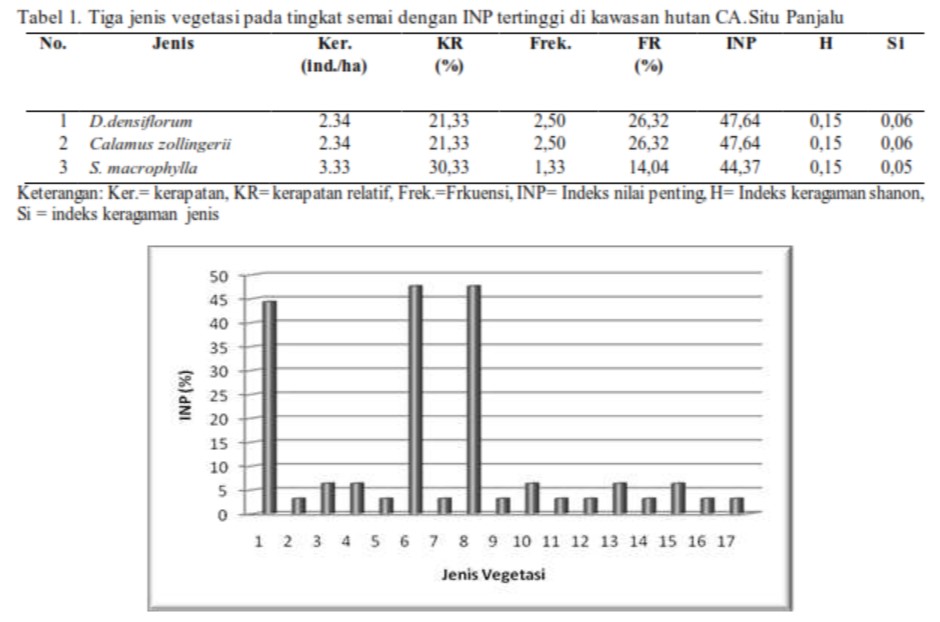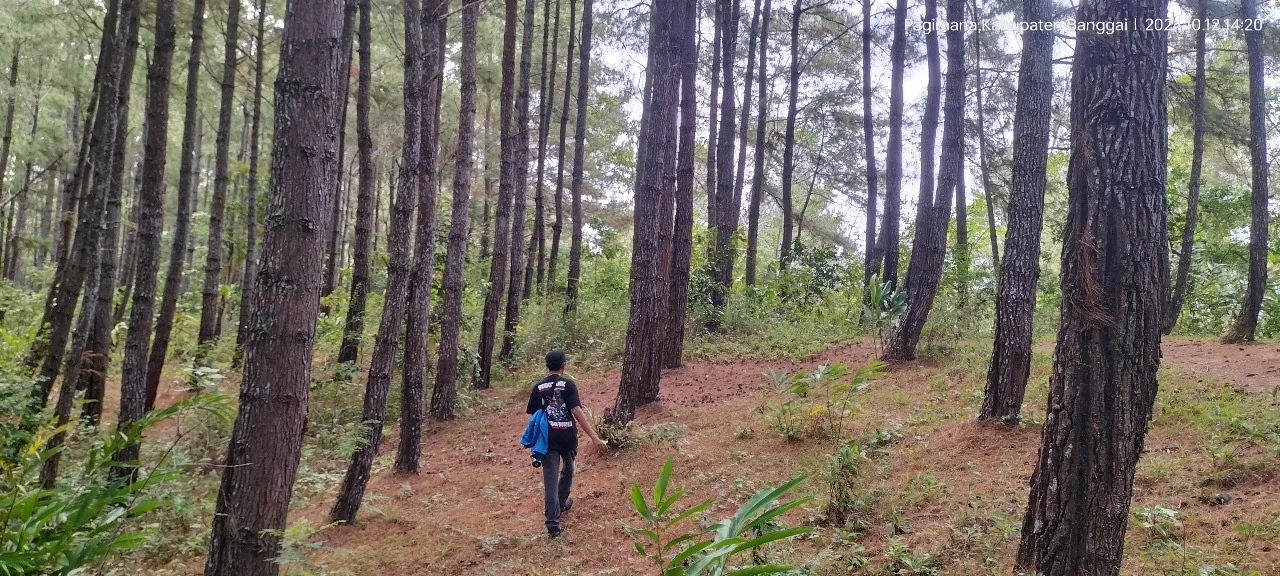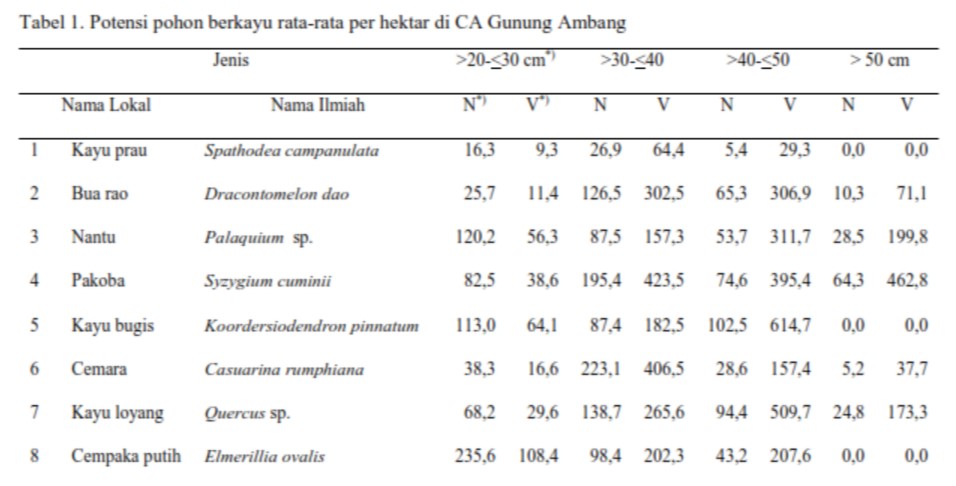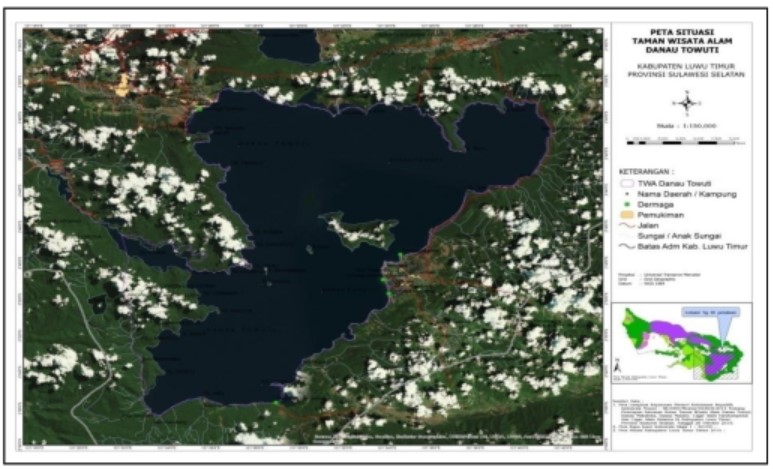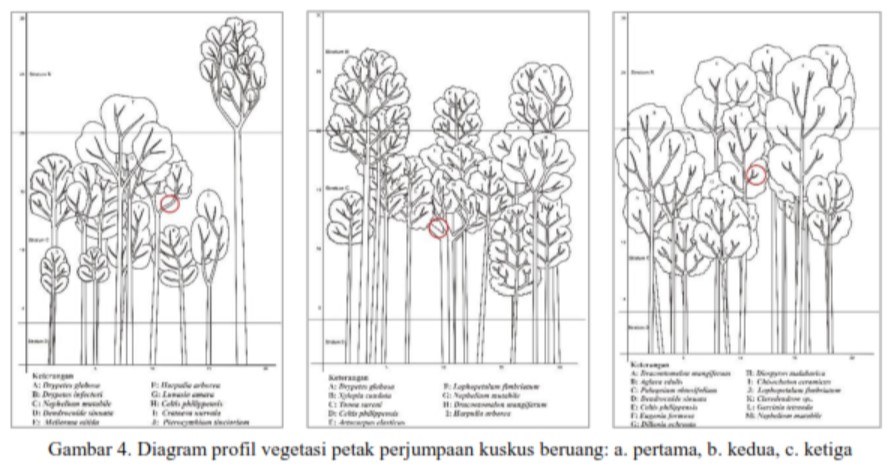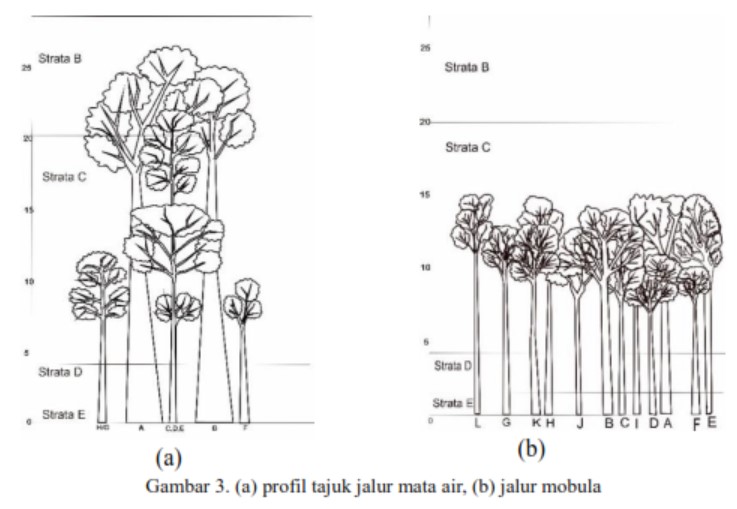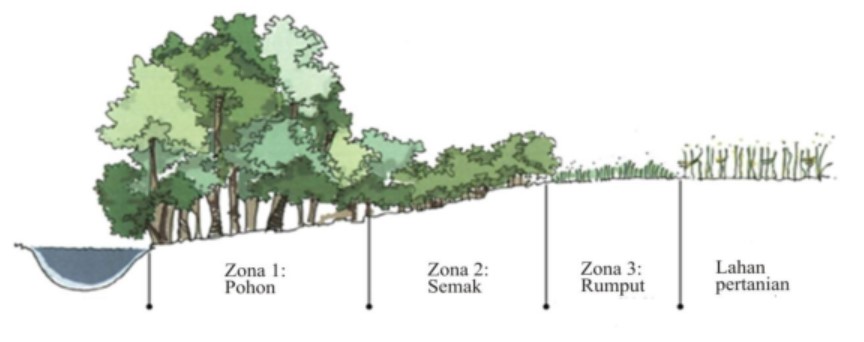The Potential of Vegetation Species Diversity for Ecotorourism Development at Nature Reserve of Panjalu Lake
Abstract
The Nature Reserve of Panjalu Lake is one of the oldest conservation area in Indonesia. As a conservation area, Panjalu Lake has different species of flora that are useful as germplasm conservation, science and education. This study aims to know the potential of vegetation species diversity for ecotourism development at Nature Reserve of Panjalu Lake. The inventory method used is line plot sampling with intensity 15 % in two paths of 500 m (adjusted according length of the area) and 20 m width. Spacing between lines is 200 m and spacing between observation plot is 100 m. Within each path, 50 m x 20 m observation plots were established. The results showed that there are three species of seedlings with highest IVI, namely: Dysoxylum densiflorum Miq. (47.64 %), Calamus zollingerii (47.64 %), and Sterculia macrophylla Vent. (44.37 %). The four species at sapling stage with highest IVI are: Litsea cassiaefolia (114.29 %); Dysoxylum densiflorum Miq (57.14 %); Litsea sp. and Endiandra rubescens Miq (14.29 %). Three species at pole stage with highest IVI, namely: Dysoxylum densiflorum Miq. (143.04%); Litsea cassiaefolia (99.78 %) and Artocarpus elasticus Reinw 9.53 %). Three species at tree stage with highest IVI, namely: Dysoxylum densiflorum Miq (147.924 %), Litsea cassiaefolia (68.753 %), and Eugenia fastigiata Miq ( 31.410 %).
Hak Cipta (c) 2017 Jurnal Wasian

Artikel ini berlisensi Creative Commons Attribution-NonCommercial 4.0 International License.
Copyright and License
All articles published in Wasian Journal are the property of the authors. By submitting an article to Wasian Journal, authors agree to the following terms:
-
Copyright Ownership: The author(s) retain copyright and full publishing rights without restrictions. Authors grant the journal the right to publish the work first and to distribute it as open access under a Creative Commons Attribution 4.0 International License (CC BY 4.0).
-
Licensing: Articles published in Wasian Journal are licensed under a Creative Commons Attribution 4.0 International License (CC BY 4.0). This license allows others to share, copy, and redistribute the material in any medium or format, and adapt, remix, transform, and build upon the material for any purpose, even commercially, provided that proper credit is given to the original author(s) and the source of the material

This work is licensed under a Creative Commons Attribution 4.0 International License. -
Author's Rights: Authors are permitted and encouraged to post their work online (e.g., in institutional repositories or on their website) prior to and during the submission process, as it can lead to productive exchanges and greater citation of published work.
-
Third-Party Content: If your article contains material (e.g., images, tables, or figures) for which you do not hold copyright, you must obtain permission from the copyright holder to use the material in your article. This permission must include the right for you to grant the journal the rights described above.
-
Reprints and Distribution: Authors have the right to distribute the final published version of their work (e.g., post it to an institutional repository or publish it in a book), provided that the original publication in Wasian Journal is acknowledged.
For the reader you are free to:
- Share — copy and redistribute the material in any medium or format for any purpose, even commercially.
- Adapt — remix, transform, and build upon the material for any purpose, even commercially.
- The licensor cannot revoke these freedoms as long as you follow the license terms.
Under the following terms:
- Attribution — You must give appropriate credit , provide a link to the license, and indicate if changes were made . You may do so in any reasonable manner, but not in any way that suggests the licensor endorses you or your use.
- No additional restrictions — You may not apply legal terms or technological measures that legally restrict others from doing anything the license permits.
Notices:
You do not have to comply with the license for elements of the material in the public domain or where your use is permitted by an applicable exception or limitation .
No warranties are given. The license may not give you all of the permissions necessary for your intended use. For example, other rights such as publicity, privacy, or moral rightsmay limit how you use the material.
Artikel paling banyak dibaca berdasarkan penulis yang sama
- Aditya Hani Aditya , Eva Fauziyah Fauziyah, Tri Sulistyawati Widyaningsih Widyaningsih, Devy Priambodo Kuswantoro Devy , Potency and Agroforestry Patterns that Support Bamboo Sustainability in Sukaharja Village, Ciamis District , Jurnal Wasian: Vol 5 No 2 (2018): December
- Aditya Hani Aditya , Levina Pieter Geraldine Geraldine , The Effect of Three Spacing and Goat Urine Application on Early Growth of Manglid , Jurnal Wasian: Vol 3 No 2 (2016): December

